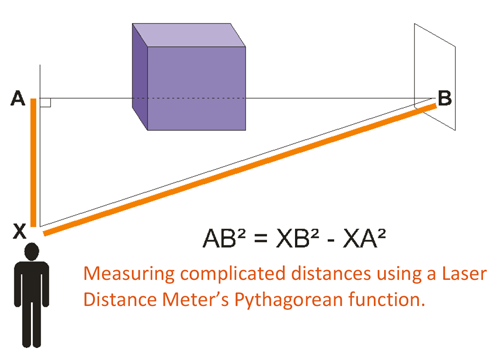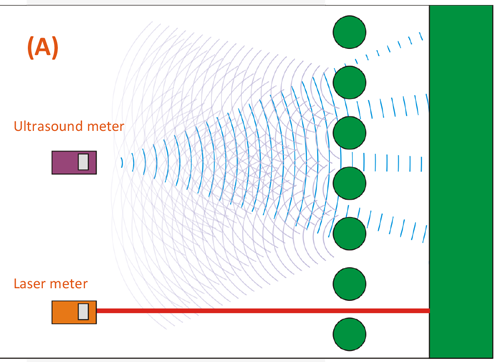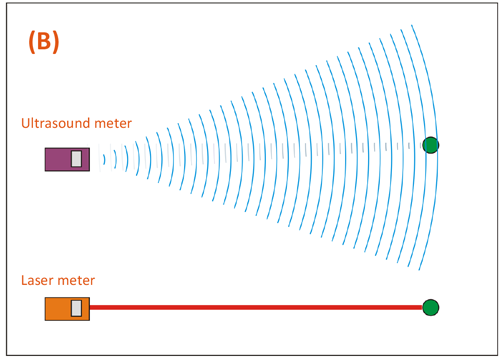Order #: LM3000XP-RENT1
Mfg #: LM3000XP-RENT1
CorDEX LM3000XP for Rent, Explosionproof Handheld Laser Distance Meter
Order #: LM3000XP-RENT1
Mfg #: LM3000XP-RENT1
Product Highlights
- CorDEX Names Transcat® U.S. Distributor for Ground-Breaking Explosion-Proof Laser Distance Meter
- LaserMETER 3000XP is equipped with an array of functions including: single measurement, continuous measurement, area & volume measurements whilst also boasting the ability to add/subtract measurements
- Certified ATEX, IECEX, CSA for potentially explosive area atmospheres
- Illuminated display
- Removeable, rechargeable 1000mAH NiMH battery pack
- Certification body SIRA Certification (ATEX, IECEX), CSA International
- Certificate Type II 2 G Ex d IIC T4 Gb, I M2 Ex d I Mb, Class I, Div.1 Groups B, C & D
- Ambient Temperature Tamb -40°C to +60°C
- Range 0.05m to 30m
- Measuring Accuracy Typically: ±3mm
- Minimum Unit Displayed 1mm
- Laser Type/ Class 635nm, <1 mW, II
- Body /Lens & LCD/Weight Cast Aluminium chassis with anti-static overmould, Toughened Safety Glass, <1.0kg
- IP 65
- Battery type Explosionproof, removable, rechargeable
- Cell type/Capacity NiMH, 1200mAh
Each Unit Includes
- Certified Laser Distance Meter
- Removable, Rechargeable Battery
- Charging Station
- Mains Charger
- Battery Removal Tool
- Documentation CD
SUMMARY
A Laser Distance Meter sends a pulse of laser light to the target and measures the time it takes for the reflection to return. For distances up to 30m, the accuracy is É3mm. On-board processing allows the device to add, subtract, calculate areas and volumes and to triangulate. You can measure distances at a distance.
Compared with a good, old-fashioned tape there’s no contest. A Laser Distance Meter wins on every count: speed , accuracy, safety, versatility, convenience and functionality.
Ultrasonic devices offer many of the same features but are less accurate.
Basic Principles
A Laser Distance Meter* sends out a finely focussed pulse of light to the target and detects the reflection. The meter measures the time between those two events, and converts this to a distance. The formula is simple: Distance = 1/2 (Speed x Time). However the speed of light is 300,000 km per second, so to resolve differences of (say) 1 cm, the meter must measure time intervals of the order of billionths of a second. But don’t worry – the technology is well established and reliable! A laser distance meter can measure distances of up to 30m with an accuracy of +/-3mm.
An Ultrasonic Distance Meter works on a similar principle, but instead of light it uses sound with a pitch too high for the human ear to hear. The speed of sound is only about ⅓ of a km per second, so the time measurement is easier, but there are other issues, as we shall see below.
* Note that we are not looking at laser ‘range finders’ – these are much less accurate, and are typically used in golf, hunting and forestry.
Why not use a Tape?
A Laser Distance Meter is accurate to within a few millimetres, certainly equalling a tape for larger distances, and the line is always dead straight – no bending or sagging! You have a choice of units, and there is no risk of misreading, as with the intermediate marks on a tape.
The Laser Distance Meter is much faster – point, click, and you have the result in front of you on the display. The job is done in just a fraction of the time it would take to use a tape.
You don’t need to walk to and fro, or have a helper at the other end. What is more, you can use it with one hand, leaving the other free to hold your notebook.
With a backlit display and the laser dot itself, you can use your Laser Distance Meter in relatively poor lighting conditions. There’s no need to wait until morning or to rig up lights.
You don’t have to access the far end of the measurement range or poke anything where it shouldn’t be poked. Only the laser light has to do that – you do not have to worry about obstacles on the ground, or even large features such as pipes or cables. If there is a line of sight to your target, and it is within range, you can very quickly find out exactly how far away it is.
For the same reason, you can measure upwards without climbing – to a ceiling or to the top of a building. So, the Laser Distance Meter brings safety benefits as well. No more scrambling up ladders or over steep or wet surfaces to get a measurement. T
hese safety and versatility benefits are particularly valuable in hazardous environments, and there will be occasions when you would not be able to do the job at all with a tape. Only a Laser Distance Meter will do.
Suppose you have to measure up for a cable run underneath a building? There is no line of sight between the start and end of the run – you have to walk around the corner. Obviously a complicated task with a tape, followed by some work on a calculator. However with your Laser Distance Meter you can measure two sides of a right-angled triangle, and it will work out the third with its built-in pythagoras functionality!
Similarly, you can get the height of a structure without even being next to it, just by measuring your distance from the base and from the top, and you can measure the width of a building by standing some distance away and taking measurements from there.
Something else that a tape simply cannot do is to work out an area from two length measurements, or a volume from three measurements. Answers in seconds without a notebook and calculator.
Another feature intrinsic to a Laser Distance Meter is that it can measure continuously in situations where you would have to reposition a tape repeatedly. You can walk along, marking out a path that is (say) a certain minimum distance from a building. This is another bonus that has great value in hazardous environments.


Laser versus Ultrasonic
On the face of it, ultrasound has many of the same advantages that a Laser Distance Meter enjoys – one-person / one-handed operation, no need to access the target personally, etc. However ultrasound is intrinsically less accurate, because sound is far more difficult to focus than laser light. Accuracy is typically several centimetres, compared with a few millimetres for laser. And in some conditions, the ultrasound accuracy can be much poorer than the ‘typical’ values.
Ultrasound needs a fairly large, smooth, flat surface as the target, so that is a severe limitation. You can’t measure to a narrow pipe, for example. The ultrasound signal spreads out in a cone from the meter and any objects in the way can interfere with the measurement. Even with laser aiming, you can’t always be sure that the surface from which the sound reflection is detected is the same as that where the laser dot is showing. This can lead to gross errors.
Range is limited to about 15m, whereas some laser devices can measure up to 200m.
Ultrasonic measuring devices may be cheaper, but the cost of their inaccuracies and limitations is far greater.
Disadvantages with ultrasonic distance meters: (A) obstructions can be a problem; (B) Small target, small signal




Conclusions
A good old tape measure may be simple and reliable, but it is limited. You’ll need to find someone to hold the other end and you’ll need to raise hot-work permits, make risk assessments and method statements. A Laser Distance Meter is accurate and quick and requires only one person and one hand. It’s easy to use and versatile.
Laser Distance Meters have on-board processing enabling the device to triangulate and calculate – it knows Pythagoras! You can measure distances at a distance, add, subtract and calculate areas and volumes. An Ultrasonic Meter has many of the same features as a laser-based meter but is less accurate, less versatile, and less reliable. It is a lower range product and a false economy!







